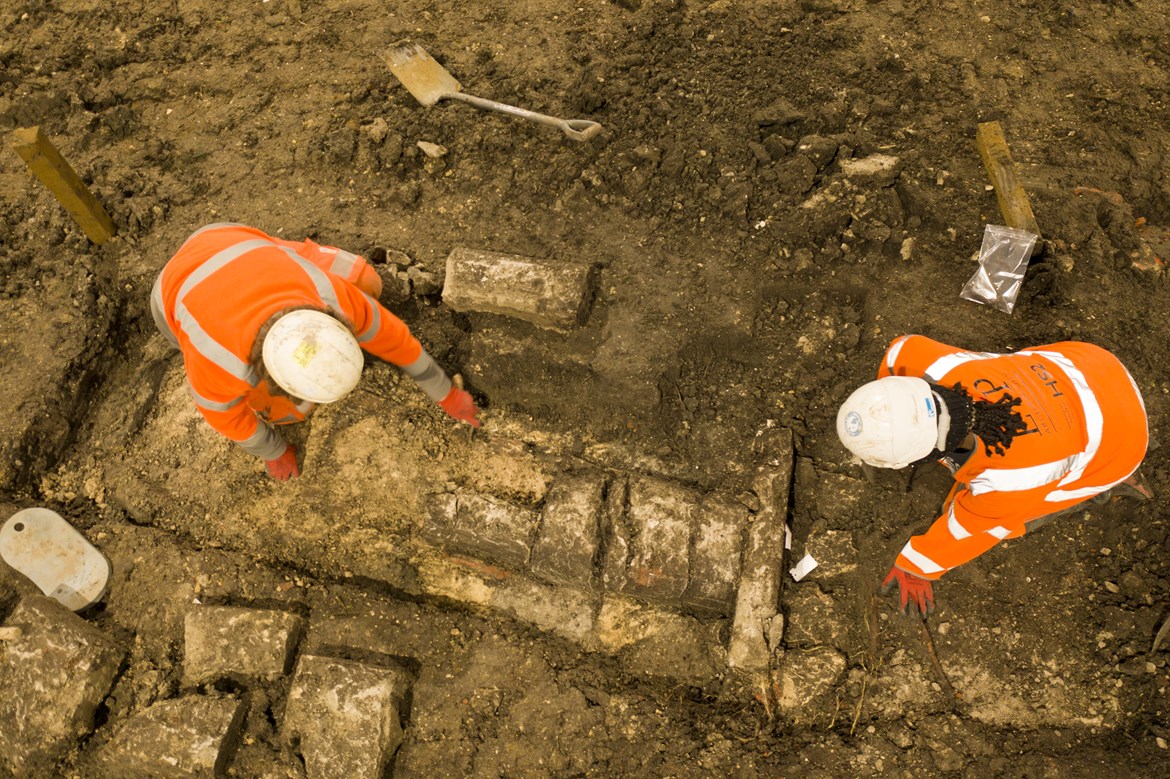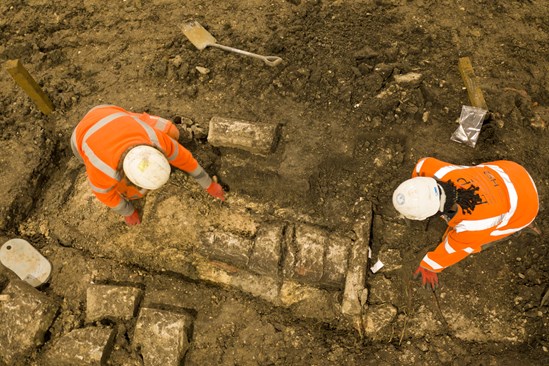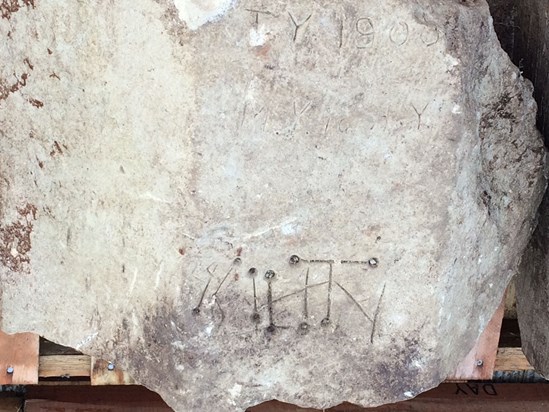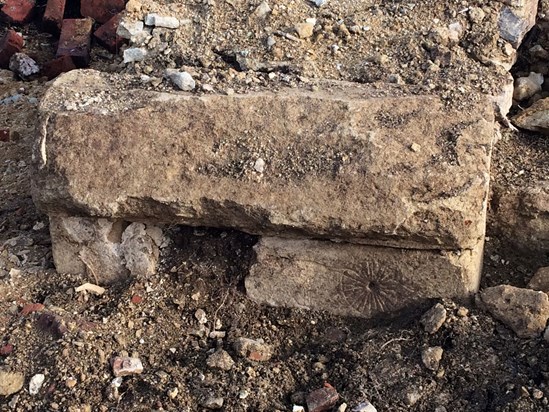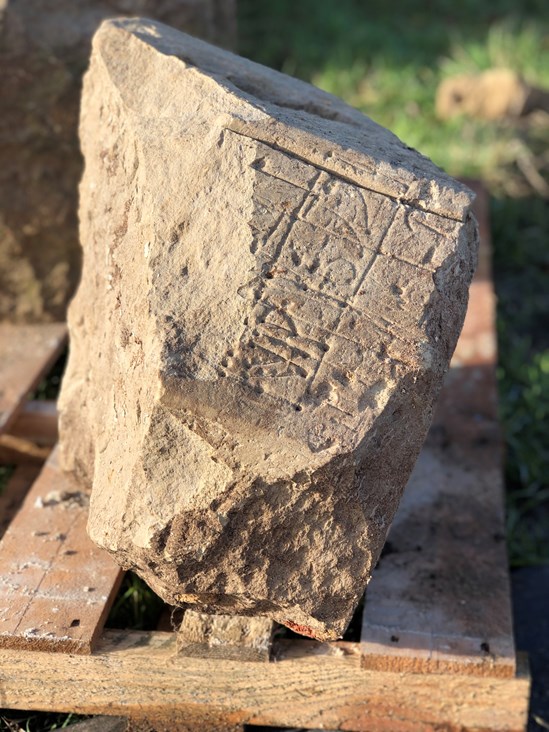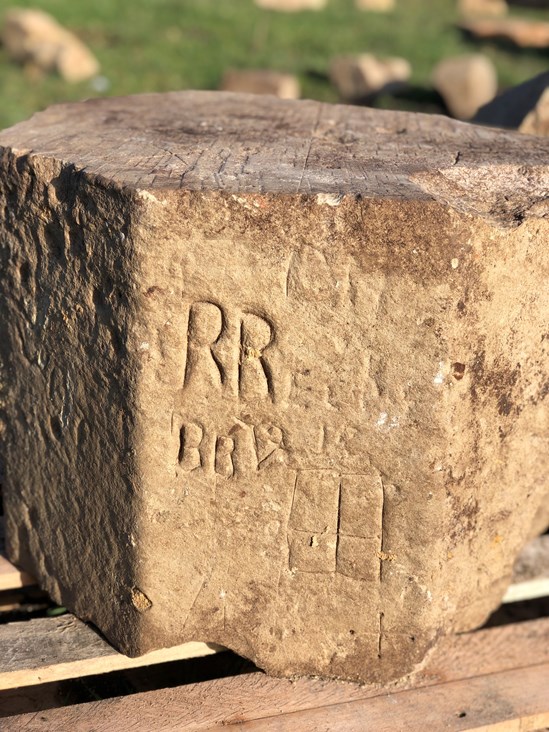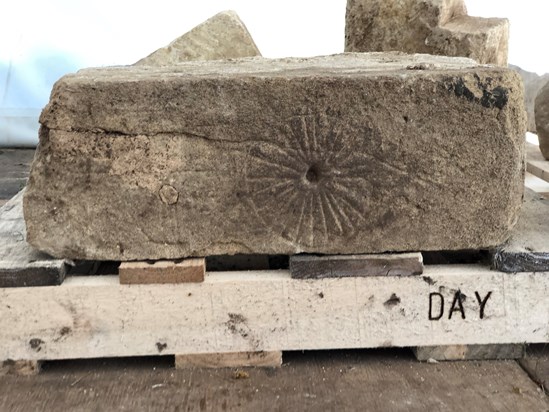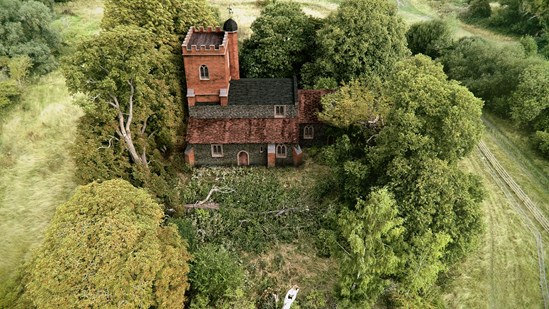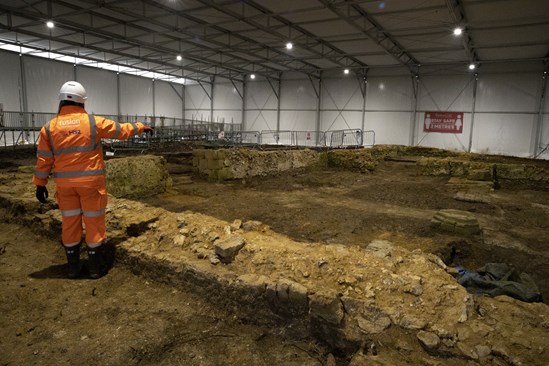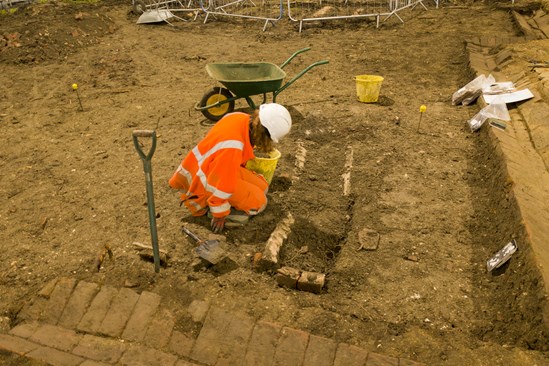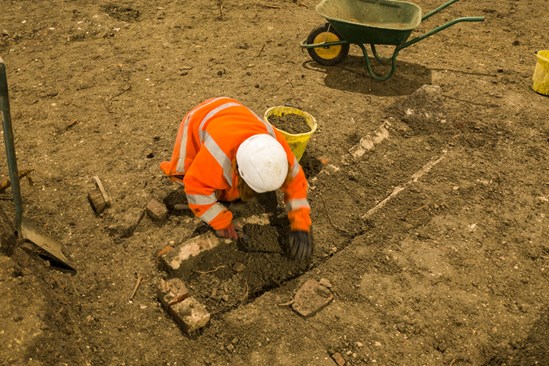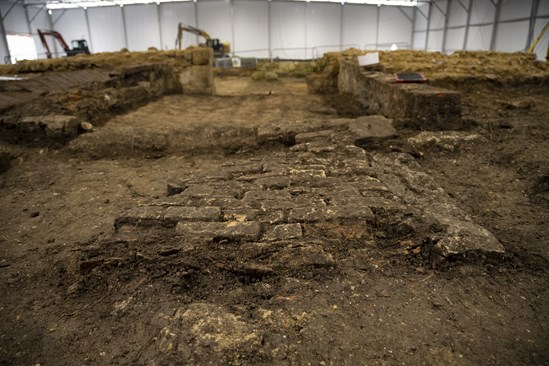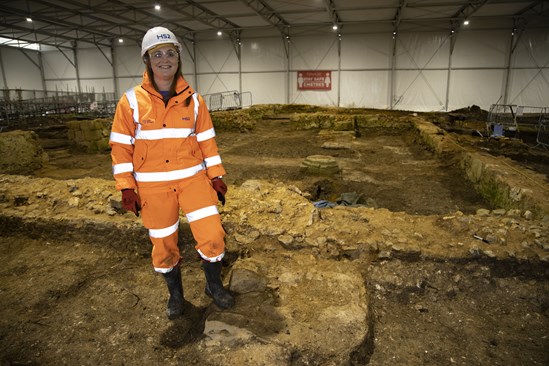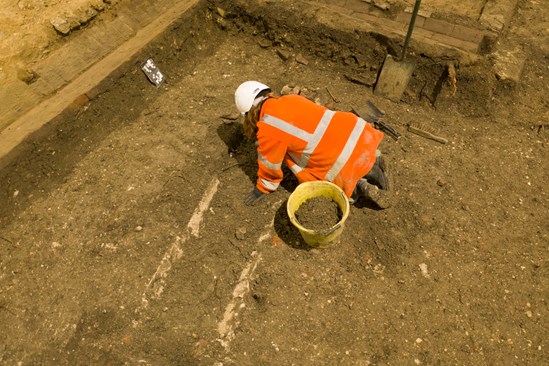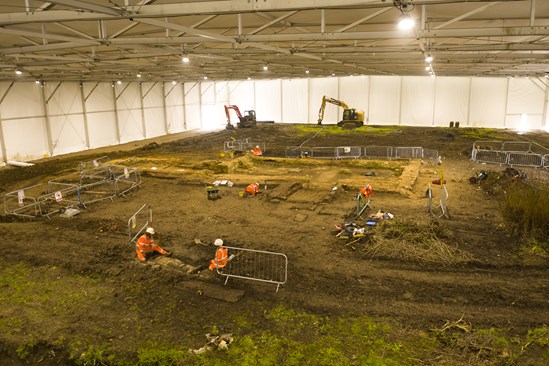Archaeologists working to prepare the UK for HS2, the new backbone of our national transport network, have begun unlocking almost 900 years of history at St Mary’s Church in Stoke Mandeville, Buckinghamshire.
The Old St Mary’s Church in Stoke Mandeville was built in 1080AD, shortly after the Norman conquest that transformed Saxon England. Renovated in the 13th, 14th and 17th centuries, it played a central role in the community, furnished with a variety of extensions and the construction of a brick bell tower. The site sits on the line of the new HS2 route and is being carefully removed by a team from LP-Archaeology, working with HS2’s enabling works contractor, Fusion-JV.
The construction of a new church closer to the centre of the village in the 1880s saw the building abandoned and falling into disrepair. According to local accounts, a child was killed by falling masonry in the 1930s, and by 1966 the building was considered so dangerous that the Royal Engineers were drafted in to demolish it. Over the next 50 years the rubble pile left became overgrown with vegetation, blending into the surrounding greenery, meaning newcomers to the area may have been unaware of the existence of the church building there previously.
The St Mary’s site is unique and the HS2 scheme is providing a rare opportunity to excavate and understand the history of this building, how its use and meaning changed over time and what it meant to the community of Stoke Mandeville. The burial ground at St Mary’s was in use for 900years, with the last recorded interment in 1908. The team of 40 archaeologists working on the site will be able to construct a picture of the role of St Mary’s in the local community from its construction in the 11th century through to its decline in the late 19th century.
Helen Wass, Head of Heritage for HS2 Ltd said:
“HS2’s unparalleled archaeological programme is well underway and the start of works at St Mary’s offers an exceptional opportunity for archaeologists to uncover and shine a light on what life was like for the community of Stoke Mandeville over such a timespan.
“All artefacts and human remains uncovered will be treated with dignity, care and respect and our discoveries will be shared with the community through open days and expert lectures. HS2’s archaeology programme seeks to engage with all communities both local and nationally to share the information and knowledge gained as well as leaving a lasting archival and skills legacy.”
In 2018 LP-Archaeology began initial work to carefully pick apart the rubble mound. A comprehensive series of archaeological excavations, surveys, and building recording has followed, revealing well preserved walls and structural features of the Church. In October last year, HS2 revealed that unusual stone carvings, medieval graffiti and other markings have been found, with questions raised as to whether they were sun dials or witching marks.
In early 2021 works begun on the final phase of excavations at the site. A large “tent” structure was constructed over the whole church and churchyard to protect it from the elements and provide a stable environment for the excavations to take place. This covering also helps the archaeologists give those people buried there the dignity, care and respect they deserve. Over the next six months, a dedicated team of archaeologists, assisted by engineers, will remove the remaining structure of the church and excavate all of the individuals buried in the churchyard. Around 3,000 burials are expected. Before work on the burial ground began a virtual blessing was given by the Bishop of Buckingham. All remains will be reburied in a local spot to be determined by HS2, with a specially created monument to mark the location.
Dr. Rachel Wood, Project Archaeologist for Fusion JV, said:
“The excavation of the medieval church at St Mary’s will offer real insight into what life was like in Stoke Mandeville for over nine centuries. Those buried there will be remembered once again and the lives they lived over 900 years understood. The best way to honour the dead is to understand their stories and how they lived their lives. Ultimately, this is what the works at the site of Old St Mary’s church will do, providing a lasting legacy to the present community of Stoke Mandeville.”
HS2 is planning to share the discoveries and stories of what life was like in Stoke Mandeville over a 900-year period a series of events and expert lectures in the coming months. More information will be made available on the HS2 in Buckinghamshire website.
